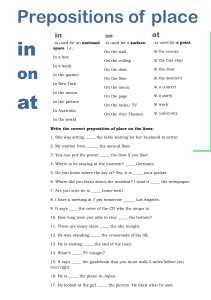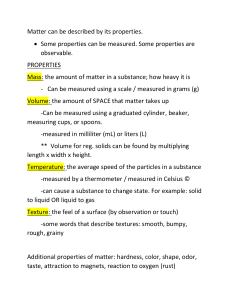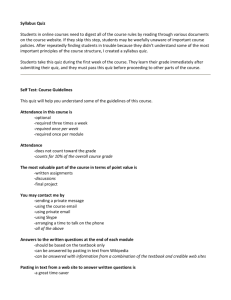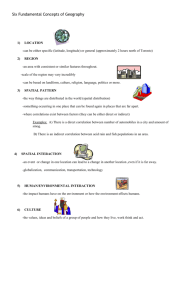PS-Makes-sense-of-problems-and-perseveres-in-solving
advertisement
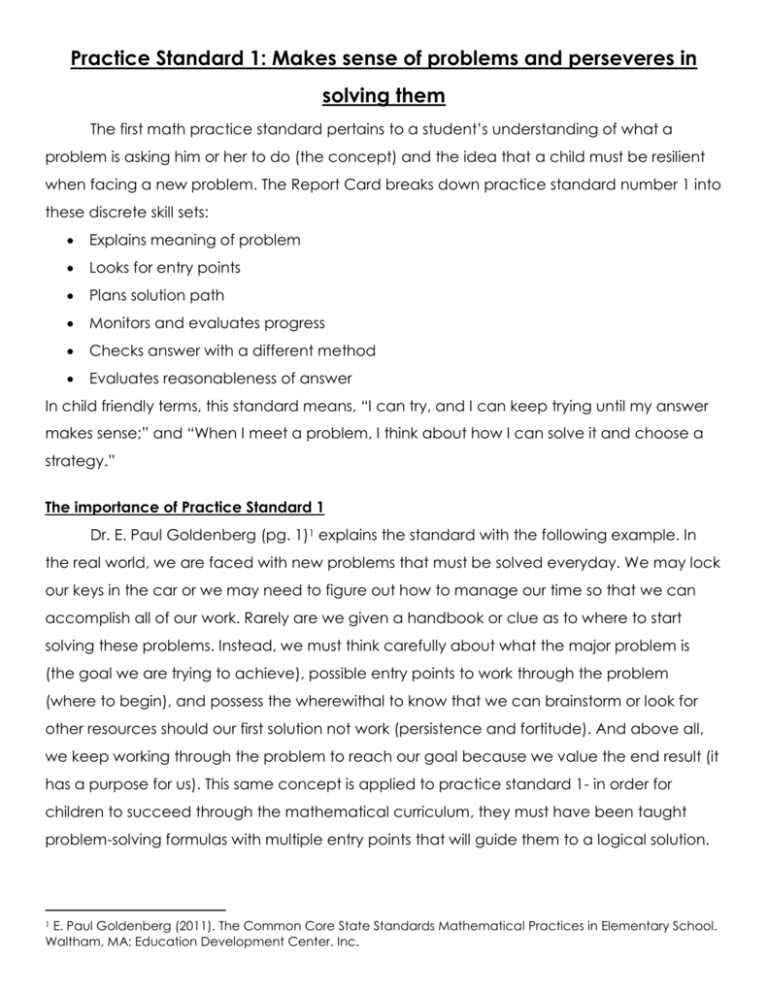
Practice Standard 1: Makes sense of problems and perseveres in solving them The first math practice standard pertains to a student’s understanding of what a problem is asking him or her to do (the concept) and the idea that a child must be resilient when facing a new problem. The Report Card breaks down practice standard number 1 into these discrete skill sets: Explains meaning of problem Looks for entry points Plans solution path Monitors and evaluates progress Checks answer with a different method Evaluates reasonableness of answer In child friendly terms, this standard means, “I can try, and I can keep trying until my answer makes sense;” and “When I meet a problem, I think about how I can solve it and choose a strategy.” The importance of Practice Standard 1 Dr. E. Paul Goldenberg (pg. 1)1 explains the standard with the following example. In the real world, we are faced with new problems that must be solved everyday. We may lock our keys in the car or we may need to figure out how to manage our time so that we can accomplish all of our work. Rarely are we given a handbook or clue as to where to start solving these problems. Instead, we must think carefully about what the major problem is (the goal we are trying to achieve), possible entry points to work through the problem (where to begin), and possess the wherewithal to know that we can brainstorm or look for other resources should our first solution not work (persistence and fortitude). And above all, we keep working through the problem to reach our goal because we value the end result (it has a purpose for us). This same concept is applied to practice standard 1- in order for children to succeed through the mathematical curriculum, they must have been taught problem-solving formulas with multiple entry points that will guide them to a logical solution. E. Paul Goldenberg (2011). The Common Core State Standards Mathematical Practices in Elementary School. Waltham, MA: Education Development Center. Inc. 1 This takes repetition, many opportunities to try and fail, and explicit teaching of the strategies. Practice Standard 1 in first grade Although Practice Standard 1 will be practiced throughout your child’s educational career, below you will find examples of the standard in action in a first grade classroom. Your child has achieved mastery in reference to the first grade report card standard if and when your child consistently… -Is able to tell what the problem is asking -Is able to tell what operation to use -Is able to choose a strategy to solve the problem -Can explain the strategy chosen -“Tell me how” -“Tell me more” -Decides if he/she needs manipulatives -Shows work -Realizes the need to change strategy or ask for help -Can use two strategies (“manipulatives”) to get to the same answer -Can demonstrate the answer with concrete objects How you can support the standard at home When your child is working though a math problem, whether it be a homework set or a real world problem that you encounter (such as while on a trip to the grocery store) you can start by using the language above to guide your child to a starting point for the problem. Asking him or her to keep going or explain his or her thinking while guiding (not telling) whether or not they are on the right track will help your child be thoughtful and internalize starting points, strategies, and ending points. Furthermore, reinforcing your child’s actions on specific tasks tells your child that the outcome and process is valued more than the behavior. Be specific in your feedback. Instead of saying “good job working through that problem (behavior based feedback),” try out “I noticed that you worked really hard adding up those 2 numbers (process-based feedback).” In the end, pointing out examples of when you need to work through a problem is the best support you can give your child as it generalizes the practice standard.

